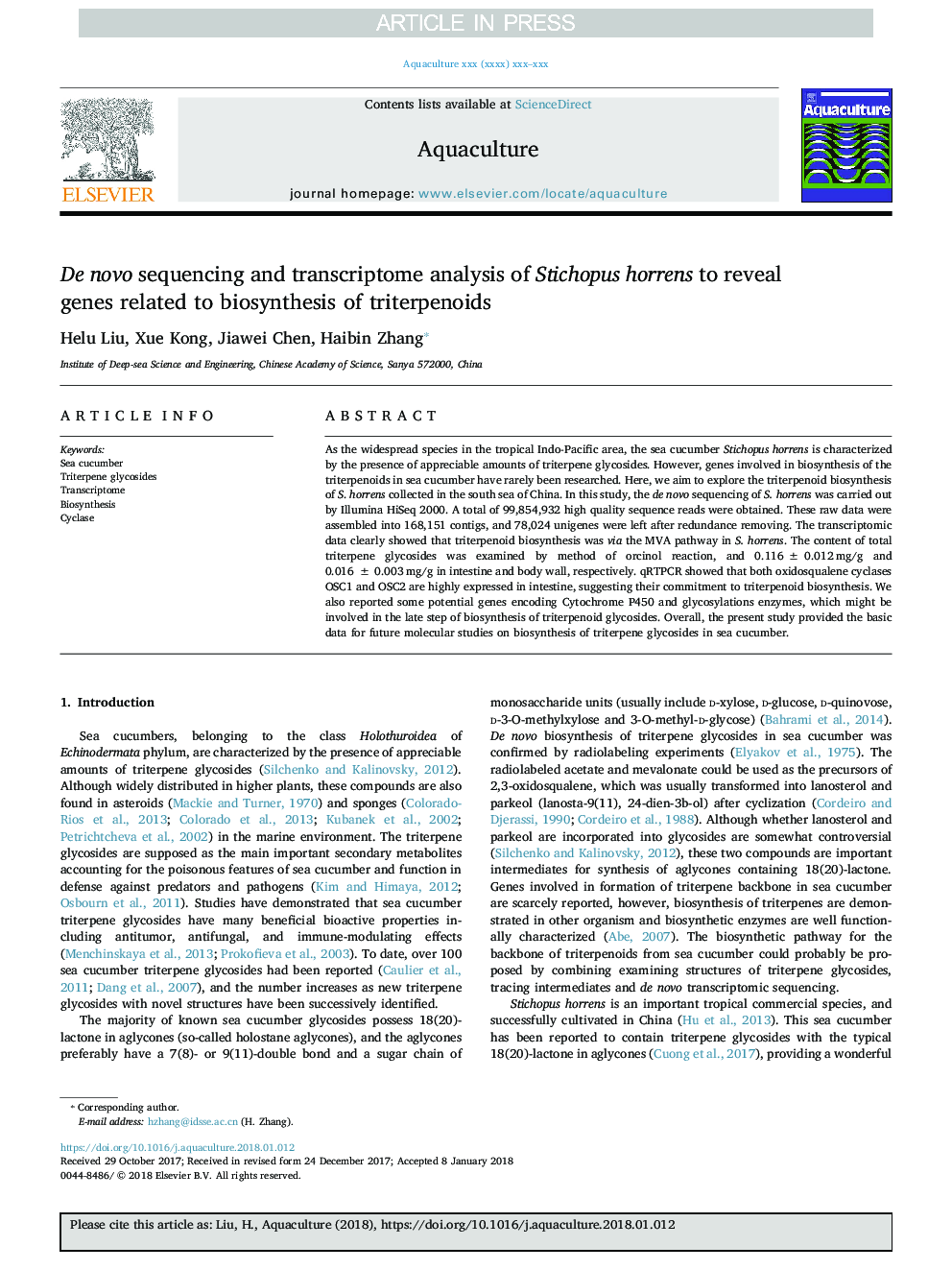| Article ID | Journal | Published Year | Pages | File Type |
|---|---|---|---|---|
| 8493280 | Aquaculture | 2018 | 10 Pages |
Abstract
As the widespread species in the tropical Indo-Pacific area, the sea cucumber Stichopus horrens is characterized by the presence of appreciable amounts of triterpene glycosides. However, genes involved in biosynthesis of the triterpenoids in sea cucumber have rarely been researched. Here, we aim to explore the triterpenoid biosynthesis of S. horrens collected in the south sea of China. In this study, the de novo sequencing of S. horrens was carried out by Illumina HiSeq 2000. A total of 99,854,932 high quality sequence reads were obtained. These raw data were assembled into 168,151 contigs, and 78,024 unigenes were left after redundance removing. The transcriptomic data clearly showed that triterpenoid biosynthesis was via the MVA pathway in S. horrens. The content of total triterpene glycosides was examined by method of orcinol reaction, and 0.116â¯Â±â¯0.012â¯mg/g and 0.016â¯Â±â¯0.003â¯mg/g in intestine and body wall, respectively. qRTPCR showed that both oxidosqualene cyclases OSC1 and OSC2 are highly expressed in intestine, suggesting their commitment to triterpenoid biosynthesis. We also reported some potential genes encoding Cytochrome P450 and glycosylations enzymes, which might be involved in the late step of biosynthesis of triterpenoid glycosides. Overall, the present study provided the basic data for future molecular studies on biosynthesis of triterpene glycosides in sea cucumber.
Related Topics
Life Sciences
Agricultural and Biological Sciences
Aquatic Science
Authors
Helu Liu, Xue Kong, Jiawei Chen, Haibin Zhang,
